The New York Law Journal by Joel Stashenko - July 27, 2009
ALBANY, NY - A seemingly modest change in how people can express interest in becoming a judge on the Court of Appeals could encourage more candidates to come forward, advancing the Commission on Judicial Nomination's goal of broadening the applicant pool for openings on the state's highest court, commission members and past applicants say. Among the changes proposed by the commission is the introduction of a two-tiered application process that would allow interested parties initially to submit a resume and a new short-form questionnaire.
The proposed change is included in new rules proposed by the commission that Ms. Kaye says will generate a larger, more diverse list of applicants from which to nominate to the governor future members of the Court of Appeals. The commission is responding to criticism it received for submitting an all-male list-with only one black-of seven candidates to Governor David A. Paterson last December to fill the opening created by the retirement of Ms. Kaye, now of counsel to Skadden, Arps, Slate, Meagher & Flom. Mr. Paterson called the list's composition an "injustice," but conceded he was bound legally to pick one of the candidates as chief judge (NYLJ, Dec. 4, 2008
How the Rules Would Change
Current: No explicit declaration against discrimination or for diversity.
Proposed: Explicit statement barring discrimination and a commitment to considering nominees "who reflect the diversity of New York's communities including, but not limited to, diversity in race, ethnicity, gender, religion, sexual orientation and geography."
Current: No provision for formation of a search committee.
Proposed: Commission chair may appoint a search committee of commission members to solicit recommendations.
Current: No specified means of giving notice of impending openings except for a "broadly disseminated public notice."
Proposed: Notifications of opens to be disseminated to the media, bar groups and law schools, as well as posted on the Internet.
Current: No provision for informational meetings.
Proposed: The commission will convene public informational meetings in each of the Appellate Division's four departments to discuss screening procedures and to hear comment about the nominating process.
Current: All applicants must complete a detailed full questionnaire.
Proposed: Use of a two-step application process where candidates initially would submit a resume and answer a short-form questionnaire. If deemed worthy, the candidate would then submit a full questionnaire.
SOURCE: Commission on Judicial Nomination
A 45-day comment period on the rules is expected to begin next week, with them scheduled to go into effect in mid-September unless the commission makes revisions based on the comments. Neither legislation nor approval by the court system is required. Barring an unforeseen departure from the Court, any changes to the commission's procedures would not be applicable until the end of 2012, when Judge Carmen Beauchamp Ciparick will be forced to step down due to mandatory retirement rules. Under current rules, anyone interested in joining the Court must submit a full questionnaire when applying. Ms. Kaye said the commission has received comments in recent months from potential candidates citing the required questionnaire as a deterrent to potential applicants. The recent questionnaire for chief judge, for instance, ran to 19 pages and included 38 broad questions, including an essay question about why the candidate felt he or she was qualified for the Court. Other questions asked applicants for the names of every "significant" client they had represented over the past five years; a list of every fraternal, social or professional group the applicant has belonged to; a bibliography of scholarly articles or speeches and lectures they had produced over the previous five years; and a detailed accounting of the state of their health.
Steven C. Krane, a Proskauer Rose partner and frequent aspirant to the Court, said he has filed applications five times. He estimated spending as many as 100 hours filling out the questionnaire the first time, though he said the required updates he filed for subsequent openings took less time. "It was a tremendous information-gathering process," Mr. Krane said in an interview. "I could see that to somebody who just wanted to take a shot at applying that it could be a significant deterrence." Michael Hutter, an Albany Law School professor and special counsel at Powers & Santola in Albany, said he found the application "onerous" the five times he applied for the Court, in part because of what he said was his keen awareness of answering questions completely and in not making errors. Mr. Hutter said he could see potential nominees declining to pursue their applications before the commission due to the paperwork. "If, in fact, after doing all this and spending a couple of days on it and then getting nothing out of it-not even an interview-people could say, 'The heck with it,'" Mr. Hutter said. "I always felt [filling out a questionnaire when initially applying] was kind of absurd."
'Some Good Changes'
The commission's procedures, largely unchanged since its establishment in 1977, were questioned by Senate Judiciary Committee Chairman John L. Sampson, D-Brooklyn, after the delivery of the all-male list of candidates to Mr. Paterson in December. At a hearing by the committee, Mr. Sampson also challenged former commission chair John F. O'Mara about why only 17 people applied last year to fill the latest opening (NYLJ, Feb. 4
Mr. Sampson wondered aloud during his hearings whether the size of the lists sent to the governor should be expanded as a means of increasing the diversity of the candidate pool. Current law requires that the commission send seven names to the governor for chief judge and between three and seven for associate judge positions. In February, Mr. Sampson said he would support A3866
diversity of nominees.
'Inherently Sound' System
Several individuals and legal groups also praised the proposed rules. Victor A. Kovner of the Fund for Modern Court said his group found the recent all-male list "troublesome," but is confident now that Ms. Kaye is heading the panel that future lists will be more diverse. "We urged her and the commission to look hard at the rules, which they have done, so that the disappointment of last year's report will not reoccur," Mr. Kovner, of Davis Wright Tremaine, said in an interview. New York City Corporation Counsel Michael A. Cardozo, who was involved in drafting the statute creating the commission in the late 1970s, said it would be a "very, very bad mistake" for the Legislature to lift the current limits on the numbers of nominees. "You want to make it a nominating commission, not a screening commission," Mr. Cardozo said in an interview. "The more you narrow the choice, so say seven names versus 11, the more you are forcing the nominating group to come up with what they see as the very best....I think we want the most highly qualified people to be on our high court." Barbara Berger Opotowsky, executive director of the New York City Bar, said her group thinks the statutory scheme creating the commission is "inherently sound" and that the proposed changes are sufficient to address the criticism the panel has attracted. Mr. Sampson, who acquired the title of Democratic "conference leader" during the protracted struggle between Democrats and Republicans for control of the Senate, said he intends to remain as Judiciary Committee chairman despite his new leadership title. The new rules are posted at nysegov.com/cjn. Comments may be sent to Mr. Younger, the agency's counsel, at spyounger@pbwt.com. Joel.Stashenko@incisivemedia.com





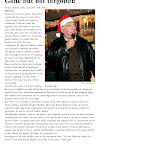

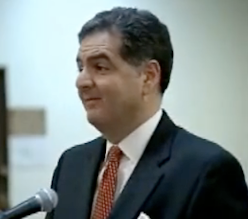
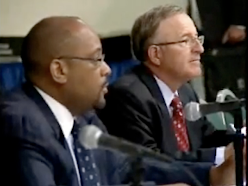
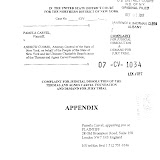
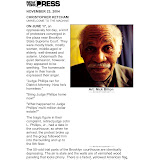
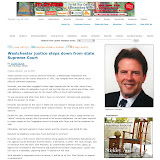
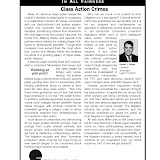

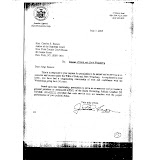
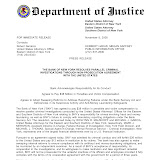
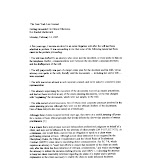
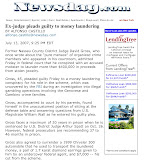
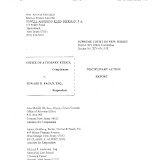
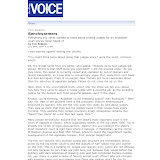

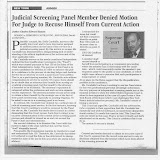

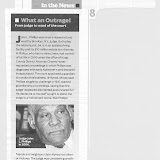
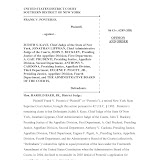
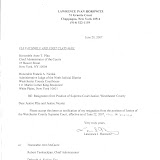
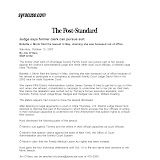
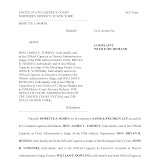

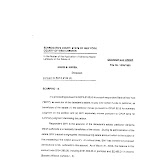
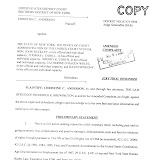
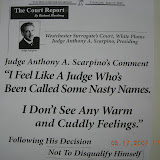
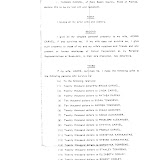
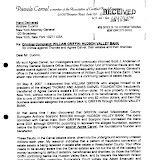
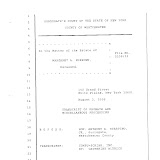
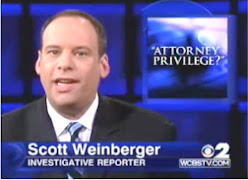
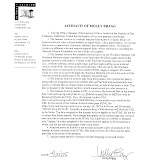
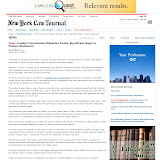
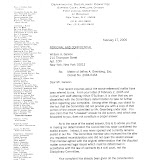
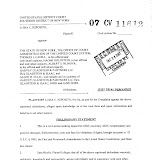
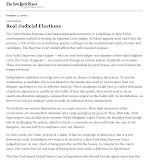
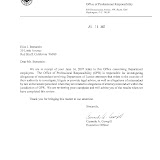
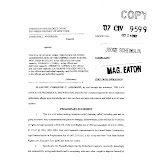
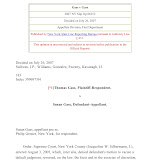
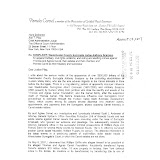

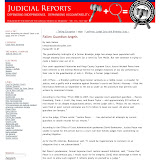
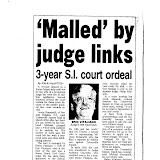
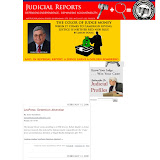
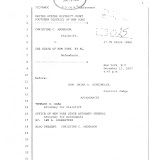
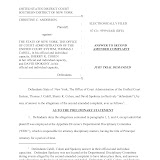
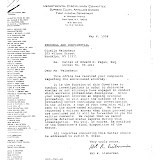
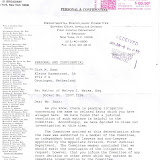
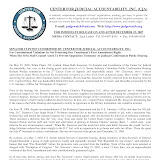
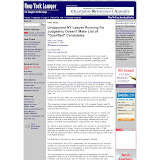
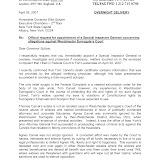
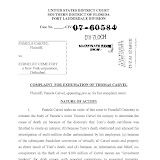
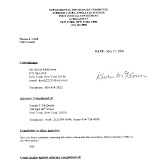
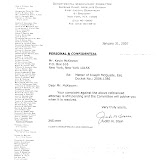
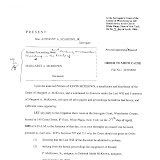
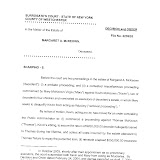
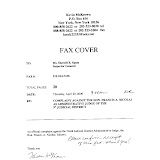
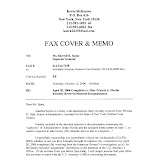
12 comments:
Title should read 'old corrupt ragged rooster' etc.
I say throw all the current judges off the state's high court. Bring in: Sol Wachler, Elliot Spitzer, Bernard Madoff, Marc Deier, Jim McGrivey, Rod Blagojevich, Alan Friedberg, Roy Reardon and Alan Friedberg. Oops, I forgot a woman. What the hell, bring back Judy Kaye.
If you're gonna have a circus, the bigger the collection of clowns, the better.
Haven't we heard enough from Judith Kaye? Go away, please, Judy....
At some point I think we need to clean our judicial house and get rid of the corrupt judges, court employees and private attorneys. They've done enough damage. But who the heck can lead such a movement?
Only 17 people applied because everyone else knew that the the deal had already been made to anoint Lippman, who had to take over to further protect Queen Judy and her misdeads.
why only 17 people applied last year to fill the latest opening (NYLJ, Feb. 4)
.... they were the only ones with enough cash!
the judges and the cjc need to lead the movement, they need to turn them all in!
The CJC has enough information on lawyers and judges and I am sure there is enough information on the CJC to help the FEDS stop the abuse of power!
That is why our complaints should go to the CJC & the FEDS
that is the only way the lawyers will stop extorting and getting better jobs only by violating someone's rights!
the crooked will have less money for their schemes!
we need the FEDS in our courthouses
the only way to accomplish this
send complaints to
- this website
- the CJC
- the FEDS
- Senator Sampson-sampson@senate.state.ny.us
ask for hearing in your area
the media should be mandated to report all allegations
as sad as all this is, then they will all turn each other in!
instead of using each other for money/power and favors
too many people can not keep a secret!
make sure you call the FEDS
not for Public Corruption, they know that exists but for the terrorists & prostitues in our courtrooms!!!!!!!!!!!
How is "Ms" Kaye an authority on discrimination in any form...she is being sued...IN FEDERAL COURT... for a second time in 12 yrs for that charge in it's broadest form!
THE ALLEAGTIONS ARE EXTENSIVE AND VICIOUS AND ABSOLUTELY TRUE AND THOROUGHLY INVESTIGATED.
EVEN IF THE NEW" AKA" MS. KAYE ATTEMPTS TO INFLUENCE THE HIGHER COURT..THE STORY IS IN STORAGE AND KNOWN TO THOSE WHO PROTECT AND WILL DEFEND IT'S INTEGRITY... AND WILL BE REVEALED TO PROVE WHAT HAS BEEN COMMITTED AND COVERED-UP...UNREFUTABLY ... EVEN BY OCA'S STANDARDS!
Post a Comment